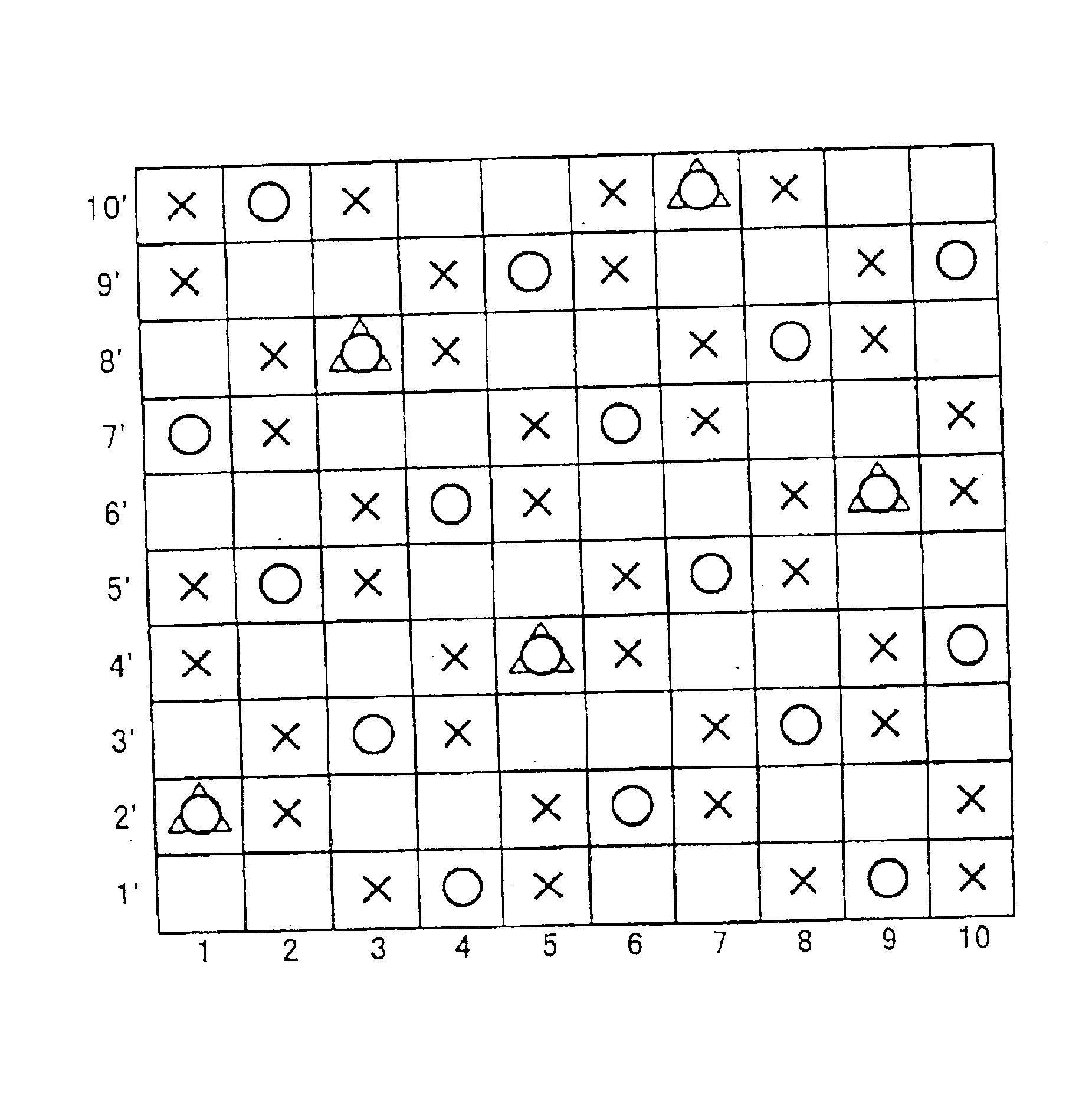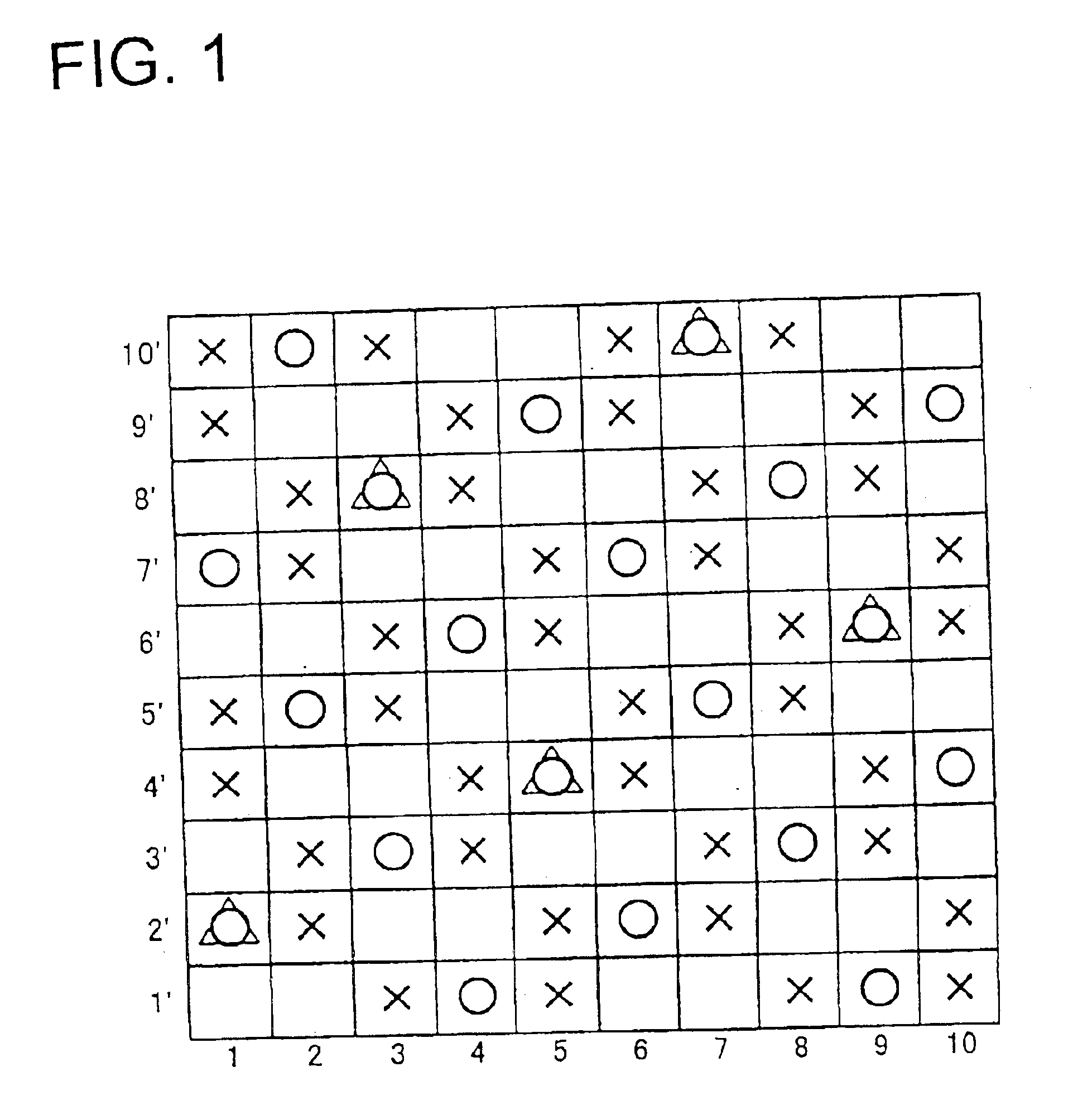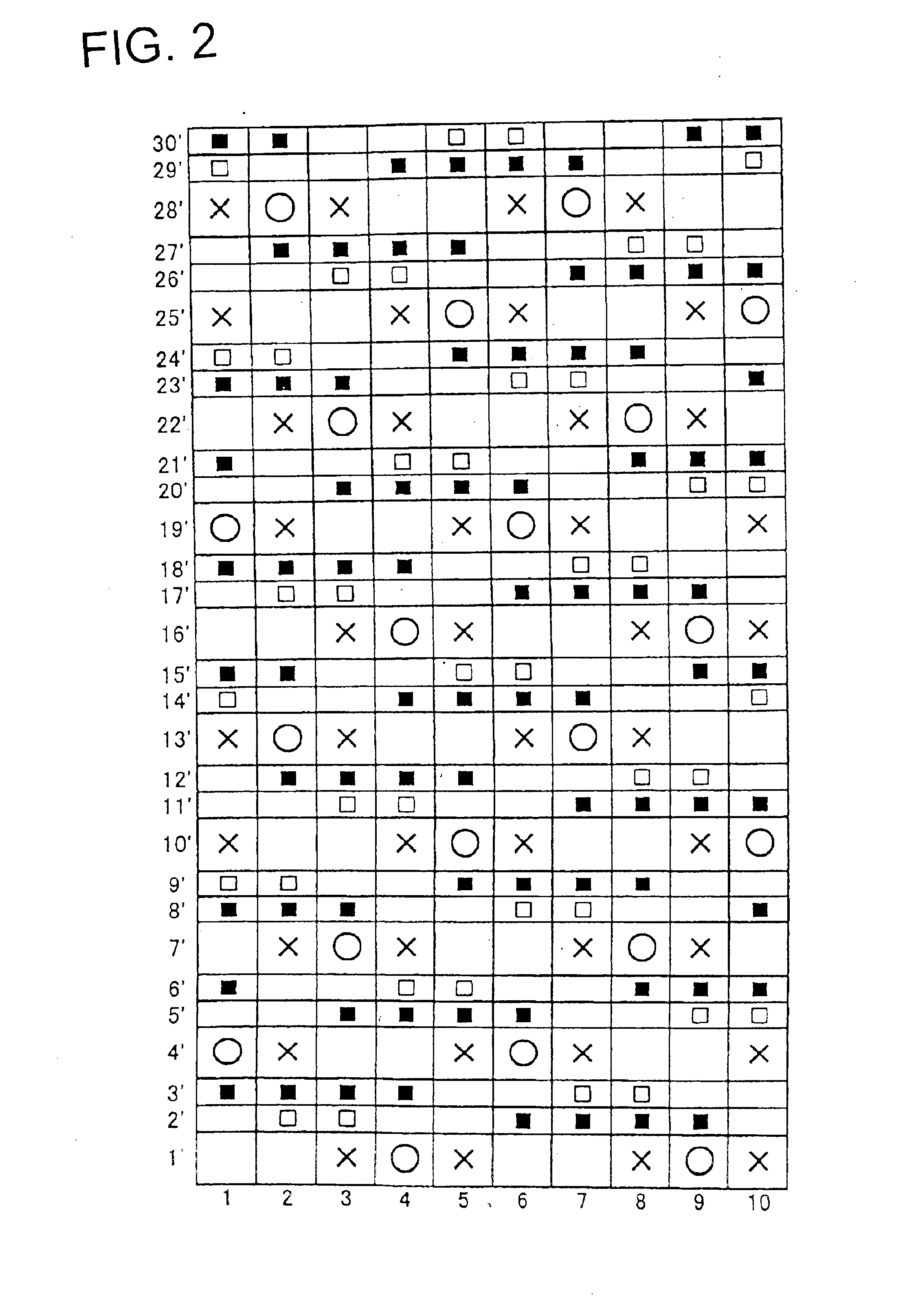Industrial multilayer fabric
a multi-layer fabric and fabric technology, applied in the field of industrial fabrics, can solve the problems inability to obtain the and inability to use yarns with excessively large wire diameters, and achieve the effect of deteriorating water filtering properties, superior surface properties and knotting force, and preferable effect of paper-manufacturing fabrics
- Summary
- Abstract
- Description
- Claims
- Application Information
AI Technical Summary
Benefits of technology
Problems solved by technology
Method used
Image
Examples
examples
The present invention will be described based on embodiments with reference to the drawings.
FIGS. 1, 2, 3 are design diagrams showing a complete texture of a repeating unit according to the embodiments of the present invention.
FIG. 1 shows the embodiment of the present invention, and one of examples in which a warp ground yarn knotting yarn is used in a ground yarn knotting yarn. FIG. 2 shows another embodiment of the present invention, and one of examples in which an auxiliary weft knotting yarn is used in the ground yarn knotting yarn. FIG. 3 shows another embodiment of the present invention and shows one of examples in which both the warp ground yarn knotting yarn and the auxiliary weft knotting yarn are used in the ground yarn knotting yarn.
The complete texture is a minimum repeated unit of a fabric texture, and the complete textures are vertically and horizontally connected to one another to form the overall texture of a fabric.
In the design diagrams of FIGS. 1 to 3, a warp and...
embodiment 1
In the design diagram of FIG. 1, reference numerals 1, 2, 3, 4, 5, 6, 7, 8, 9, 10 denote yarns of a warp direction, and the upper surface side and running surface side warps, and the warp ground yarn knotting yarn and running surface side warp are vertically disposed. The running surface side warps are disposed in all of the yarns 1 to 10, the upper surface side warps are disposed on the yarns of even numerals 2, 4, 6, 8, 10, and the warp ground yarn knotting yarns are disposed on the yarns of odd numerals 1, 3, 5, 7, 9.
Reference numerals 1′, 2′, 3′, 4′, 5′, 6′, 7′, 8′, 9′, 10′ denote wefts, and the upper surface side wefts are vertically disposed on the running surface side weft.
The surface of the upper surface side layer has a texture in which the upper surface side warp passes over two continuous upper surface side wefts and then passes under three upper surface side wefts, and the texture is repeated twice in one cycle. The warp ground yarn knotting yarn passes over two upper su...
embodiment 2
FIG. 2 shows an embodiment in which an auxiliary weft knotting yarn of the present invention is used.
An auxiliary weft is a yarn which corrects dents in an original weft, and between the wefts disposed between the original wefts, and this produces an effect that a surface property is remarkably improved.
In the design diagram of FIG. 2, reference numerals 1, 2, 3, 4, 5, 6, 7, 8, 9, 10 denote warps, and the upper surface side and running surface side warps are vertically disposed. Yarns of a weft direction are denoted with 1′, 2′, 3′ . . . 29′, 30′, among these, the wefts are 1′, 4′, 7′, 10′, 13′, 16′, 19′, 22′, 25′, 28′, the upper surface side wefts are disposed on the upper side, and the running surface side wefts are disposed on the lower side. Moreover, the other yarns are auxiliary weft knotting yarns, and pairs of 2′ and 3′, 5′ and 6′, 8′ and 9′, 11′ and 12′, 14′ and 15′, 17′ and 18′, 20′ and 21′, 23′ and 24′, 26′ and 27′, and 29′ and 30′ are disposed.
The textures of the upper s...
PUM
 Login to View More
Login to View More Abstract
Description
Claims
Application Information
 Login to View More
Login to View More - R&D
- Intellectual Property
- Life Sciences
- Materials
- Tech Scout
- Unparalleled Data Quality
- Higher Quality Content
- 60% Fewer Hallucinations
Browse by: Latest US Patents, China's latest patents, Technical Efficacy Thesaurus, Application Domain, Technology Topic, Popular Technical Reports.
© 2025 PatSnap. All rights reserved.Legal|Privacy policy|Modern Slavery Act Transparency Statement|Sitemap|About US| Contact US: help@patsnap.com



